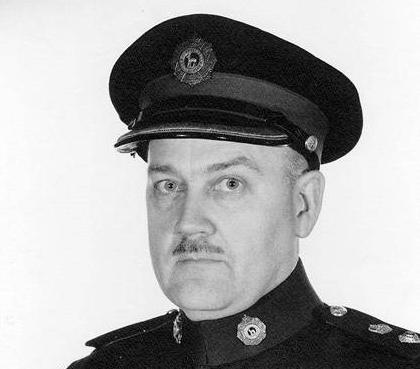Both parties
hired high-powered legal help in the cases. Acting on behalf of the College was
C F Adams, at the time Secretary-Treasurer of the Alberta Law Society. Acting for MacLauchlan during his first appeal was
E V Robertson, a prominent Calgary lawyer (who later died young – only 40). For
the second appeal he had the assistance of A.L. Smith, one of the pit bulls of
the Alberta legal profession.
What were the six
charges of unbecoming and unprofessional conduct that the Court made a decision
upon on May 17, 1927? Four stood out. One of these related to the excessive number of prescriptions for
narcotic drugs issued by MacLauchlan over a period of time which ended in
January, 1920. It is not clear if the incidents all took place in Calgary. In
any case, more than five years passed before this particular complaint was looked
into and, as the Court noted, MacLauchlan had not repeated the offence during
that later period.
Another charge
related to a woman upon whom he had performed an unnecessary thyroidectomy. He
was criticized for his failure to confer with other members of the medical
staff of the hospital, the name of which is not given in the court document.
This is called the Dawson case and his failure to consult was punished by a suspension
from the institution’s staff. Writing
about the matter, the judge states that “the Dawson case strikes me as being
rather a case of negligence or of unskilful treatment than misconduct.”
In the liquor-related
case, it appears he was dispensing liquor to people he should not have been but
whether these people were staff, patients or simply outside people is not
clear. According to the documents such practices were not unusual among other
medical staff. It is interesting to note that prohibition was in effect in
Alberta between 1916 and 1924. However, it appears that doctors may have had
the right to dispense alcohol for “medicinal purposes” and that MacLauchlan in
particular took advantage of this right. As the judge wrote:
His abuse of
his privileges as a member of the medical profession in the dispensing of liquor
was unbecoming and improper and in fact quasi-criminal, it being in
breach of the law. It is, of course, no defence that many others were, as he
says, doing it.
In relation
to the Thyroidectomy, the judge wrote:
I can see no excuse for his failure to make a full
report on the Dawson case to the insurance company. According to the record he
stated that he knew at the time of the inquiry that this was wrong and pleaded
his inexperience in excuse for it, the incident having taken place in 1922,
three years before the inquiry and when he had been in practice here for
about three years.
The fourth
incident was called the Becthold incident. Details are extremely vague in the
documents but it appears to have occurred in relation to Dr MacLauchlan being
jailed – for an unknown reason -- on a very short term basis and a Mr Becthold
paying the doctor’s bail. The incident, which involved an unpaid loan from
Becthold to MacLauchlan, was described in the
court documents as “either
dishonesty or gross impropriety” since Becktold’s generosity was not repaid --
ever. Some of the money was paid to a
Calgary lawyer, Gregory A Trainor, as a fee for his
services on behalf of the doctor.
Seeking to put the
various charges in perspective and to be fair and sympathetic to MacLauchlan,
the judge wrote:
I think the punishment inflicted [in the earlier decision by the College to strike MacLauchlan
from its list] too severe.
The appellant is a young man who has been practising his profession for but
about eight years. The erasure of his name from the register means the taking
from him of his means of livelihood for I fancy he will not be able to practice
his profession in any other country so long as he is in bad standing in this
province. The result of course is the absolute waste of all the years and the money
that he spent in qualifying himself to practice it and the beginning of life
anew in some other calling. I do not think that his offences call for such
drastic punishment. While they are six in number they cover a period of about
that number of years.
As mentioned above, the cases attracted
some quite prominent members of the Alberta legal profession, including Bencher
Charles F Adams, who was a former Secretary-Treasurer of the Alberta Bar
Association and acted on behalf of the College, and E.V. Robertson for
MacLauchlan. Acting in MacLauchlan’s final (and successful) appeal was Arthur L. Smith, K.C., a
formidable criminal lawyer who was nationally respected. During his career,
A.L. Smith was associated with many of Alberta's great law cases
including 1933’s MacMillan vs. Brownlee, in which a sitting Premier
of Alberta, John Edward Brownlee, was initially brought low by accusations of
sexual misconduct brought against him by a young woman, 18
year-old Vivian MacMillan, employed as a stenographer at the government
buildings
and her father Allan MacMillan. Although the girl and her father initially won
damages from the premier, the latter appealed the decision to the Supreme Court
of Alberta and had it overturned. It was A.L. Smith who handled the
cross-examination of Vivian MacMillan on Brownlee’s appeal and reduced her to
tears and confusion in the court.
The upshot of the Alberta Supreme Court
cases between 1925 and 1927 appears to be that it is quite easy to demonstrate
that Dr Robert Henry MacLauchlan always had a whiff of shadiness to his
character and it appeared fairly early in his career.
